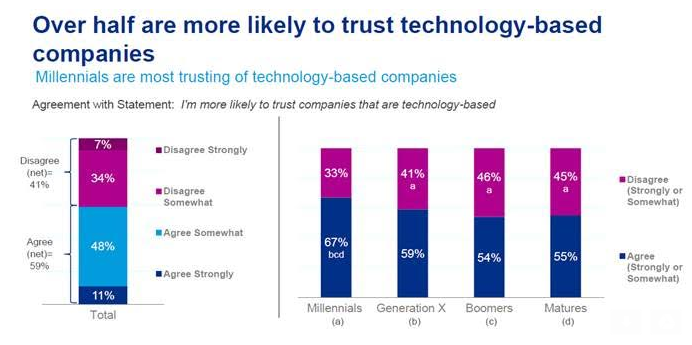Millennials’ Growing Distrust Of Plastic Cards Pave Way For Digital Payments
Less than a decade from now most payments will probably be made with apps in phones or smartwatches, using biometric triggers or other mechanisms that don’t involve swiping or using plastic cards. Just as credit cards have mostly replaced cash so will credit cards themselves be “replaced” by digital payments which will continue to rely […]

Less than a decade from now most payments will probably be made with apps in phones or smartwatches, using biometric triggers or other mechanisms that don’t involve swiping or using plastic cards. Just as credit cards have mostly replaced cash so will credit cards themselves be “replaced” by digital payments which will continue to rely on the credit infrastructure but will obscure the plastic card itself.
According to March 2015 consumer survey data from the US Federal Reserve 24 percent of consumers have used mobile payments in some form in the past year. This can include at an offline point of sale, an in-app payment or the use of a mobile payment vehicle to transfer money to a third party or creditor.
As part of its holiday shopping PR, PayPal shared some 2015 survey data that show Millennials with growing ambivalence toward or distrust of credit cards. PayPal argues, consistent with its own self-interest, that “Millennials want credit that is as digitally native as they are.”

According to the survey data, 34 percent of Millennials see credit cards as “old school.” It’s not entirely clear what that means other than that they don’t identify themselves strongly with credit cards. So-called “Centennials” (Generation Z) are likely to be even more inclined to think this way.
Many mobile payments skeptics argue “there’s nothing very painful about swiping a credit card” at a point of sale terminal — although entering 16 digits into a mobile webpage can be extremely painful. Some people also have (irrational) security or privacy fears about making offline mobile payments, though they’re actually more secure than credit card transactions.

Yet the PayPal survey used “recent data breaches in the news” to elicit the finding that traditional credit cards are not perceived to be secure. This view was equally true across age groups. The fact that most respondents “agree[d] somewhat” indicates that people are confused and not sure what’s true. The perception of insecurity is pervasive however.
Regardless, the mobile orientation of Millennials and Centennials and the image of credit cards as “uncool” or associated with other generations and vulnerable to hacking is laying the emotional and psychological foundation for broader adoption of digital and mobile payments technologies — both for online and offline transactions.
Using something like Apple Pay makes conventional credit card payments seem awkward by comparison. In addition mobile apps such as Uber that both enable transactions and push them to the “background” enable business models that don’t rely on advertising for revenue.

Finally, Millennials say they are more inclined to trust technology companies in the PayPal survey. It’s somewhat problematic that there’s no alternative for comparison purposes — banks or retailers are implied. But this raises the prospect that Apple or Google will be more trusted as a payment broker in the future than Visa or Amex even though banks and credit card issuers behind the scenes are absolutely critical to the success of the digital payments ecosystem.
Contributing authors are invited to create content for MarTech and are chosen for their expertise and contribution to the search community. Our contributors work under the oversight of the editorial staff and contributions are checked for quality and relevance to our readers. MarTech is owned by Semrush. Contributor was not asked to make any direct or indirect mentions of Semrush. The opinions they express are their own.
Related stories